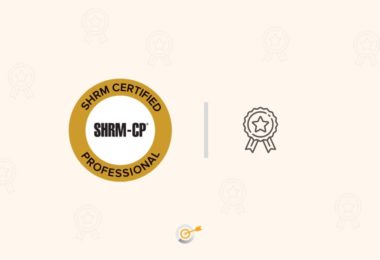
Overview of a CPR Certification
Medical emergencies are hard to predict. It is impossible to say when a life-threatening situation will come up. When medical crises arise, it is important to be prepared. One way to prepare for such situations is by being well-versed with the techniques and practices of CPR and BLS. Cardiopulmonary resuscitation, or CPR, combines basic medical help, including effective chest compressions, and high-quality and appropriate ventilations. In short, it regards the proper use of an automatic external defibrillator.
CPR provides immediate medical care for people in medical emergencies until they can receive proper medical treatment and full medical services. The American Heart Association highlights the most important steps of CPR and BLS in a “four-link chain of survival.” The chain of survival includes early recognition of an ongoing emergency, early initiation of CPR by a bystander, early use of a defibrillator, and early advanced life support once more qualified medical help arrives. Qualified bystanders with training in CPR are encouraged to perform the first three steps of the four-link chain of survival.
There are several training providers for CPR. However, none of them are accredited by the American Heart Association because AHA is its own provider(1). However, AHA is not the only accreditation agency in the world. Several training providers are accredited by several other agencies, which provide their own assurance for the courses offered by the provider. However, each course is similar in that they offer similar concepts that outline CPR. These courses combine the best of best practices, research, science, and education to deliver targeted information for CPR and Emergency Cardiovascular Care (ECC). This course teaches
- High-quality CPR for adults, children, and infants
- The AHA Chain of Survival, specifically the BLS components
- Important early use of an AED
- Effective ventilations using a barrier device
- Importance of teams in multi rescuer resuscitation and performance as an effective team member during multi rescuer CPR
- Relief of foreign-body airway obstruction (choking) for adults and infants
Recommended Articles ;
Guide to Becoming a Cardiologist
How Much Can You Really Earn As an EMT ?
A Guide on Everything About EMT Certification
Is This Course Right for You?
While, originally, the CPR Course is designed for healthcare professionals and other personnel who need to know how to perform CPR and other basic cardiovascular life support skills in a wide variety of in-facility and prehospital settings, people who want to be ready to tackle life-threatening issues can take up this course as well. That means there are no eligibility criteria for getting this certification.
There is no compulsion that only prehospital service providers like EMTs, Paramedics, Firefighters, and other professionals only should take this course. If you want to be ready to tackle any life-threatening situation, then you can take this course. Since this course trains people in CPR methods, ECC, and the use of AEDs, individuals are qualified for this training as well.
What is the Certification Process for CPR Certification?
The most important thing to note here is that the American Heart Association does not accredit any training provider because it has its own CPR course. That being said, most training providers have some other form of accreditation from various agencies. Several reputed agencies themselves might offer courses. For example, the Red Cross offers its own form of CPR training.
The general process for certification is classroom training. This training might be in-person, instructor-led training, or online training. Some providers might require hands-on assessment as well. However, institutions like the Red Cross don’t require any hands-on experience. As Red Cross states, once the certification is complete, any training required for continuing education units will be provided additionally. This is an important distinction because not all training providers offer the certification keeping a layman in mind.
This certification is primarily used in case of
- Cardiac Arrest
- Respiratory Arrest
- Drowning
- Choking
In the US, because bystanders are also encouraged to perform BLS on an ailing person, this course becomes useful for everyone. So, when choosing a course, it is important to see what the course offers for individuals. Most training providers only require that you complete an online exam. The form of certification depends on the training provider. Red Cross offers a lifetime access digital certificate. This is true for most trainers as well. Most online courses offer e-certificates stating completion of the course.
According to the AHA website, the courses available currently for instructor-led programs are
- Advanced Cardiovascular Life Support (ACLS) – for EMS Students
- ACLS for Experienced Providers (ACLS EP) – for EMS Students
- Basic Life Support (BLS) – for EMS Students
- Pediatric Advanced Life Support (PALS) – for EMS Students
- Pediatric Advanced Emergency Assessment, Recognition, and Stabilization (PEARS®) – for EMS Students
Validity and Recertification for CPR Certification
Red Cross allows a digital certification with a unique code as well as a QR code. Employers who want to verify the veracity of the certification can log on to the portal and check its validity. It is important to note that the certificate only lasts for 2 years. That means each time you need to get yourself certified by writing the exam. This is in addition to the continuing education units required of nurses, EMTs, or any other professionals.
As for the recertification process, each training provider has its own rules. Some do not place a limit on the number of retakes included as part of the original payment. That means you can retake the exam as many times as it takes to pass. Some training providers do not place a waiting period limit as well. That means you can take it as and when you feel comfortable. This is not the case with every training provider. Some of them place a limit on the number of retakes or put a mandatory waiting period. Yet others charge a fee for any retakes that the candidate might require for passing.
Before choosing a training provider, you need to check their recertification policy and the additional services they offer. Some offer services like continuing education units, digital certification with lifetime access, free recertification, or some other variation of that.
What is the Salary for CPR Certified Professionals?
CPR certification alone does not provide a job. It is merely a supplement in a larger job role. Several hospitals and agencies require that their professionals get a CPR certification as part of the job role efficiency standards. The United States Bureau of Labor Statistics does not offer salary details for CPR-certified professionals. It classifies them under medical health technicians. For them, the median salary is about $40000. The job is expected to grow by 11% in this decade.
Where to Get Online Resources for CPR Certification?
Each training provider offers a slightly different course. There are several providers such as AHA, Red Cross, Udemy, CPR today, National CPR organization, and many more. Several offer a sneak peek into their course. You can get online resources from these trainers themselves. However, what is important is to choose the right training provider for the certification, depending on your needs.




